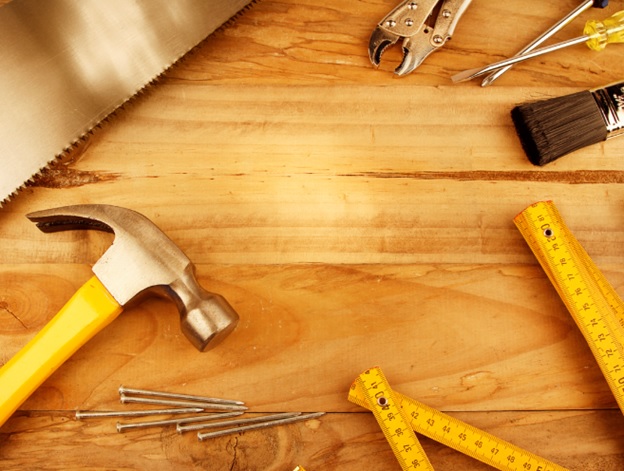
Five Fine Woodworking Skills We Bring to Your Project Skill levels can vary significantly from one company to another regarding home remodeling and woodworking projects. Contractors are often skilled in rough carpentry, and they can frame the project. They then hire subcontractors to finish it. We are a full-service woodworking shop and can handle every aspect of a project, from the design to the installation, including completing work. We are proud of our attention to detail, workmanship, and fine woodworking skills.
These tools are different from the time-tested skills of woodworking. These techniques are rooted in the Old World, and artisans have used them for centuries to make furniture that will last for generations. We are proud to operate these techniques in our woodworking.
Woodworking skills can be helpful in a wide range of projects. Our team can build custom furniture, restore old antiques, install cabinets or millwork, and create custom millwork. These skills are also used for larger projects as we pay attention to the details that make a kitchen renovation project unique.
Our craftsmen have 5 basic fine woodworking skills they use to create projects.
- HAND PLANING
Before the advent of power tools, woodworking was an entirely manual craft, relying on skill, precision, and patience. Hand planing, a fundamental technique in this craft, is essential for shaping and smoothing lumber for various uses, particularly in furniture making. Hand planes come in various forms, each designed for specific tasks. They range from large jointer planes for flattening boards to smaller smoothing planes for fine finishing.
When working on solid wood table tops, such as live edge tabletops, hand planes are particularly invaluable. These tools allow the woodworker to meticulously work the surface, preserving the natural beauty and integrity of the wood. The process involves careful strokes, each shaving off a thin layer of wood, gradually bringing out the smoothness and flatness required for a high-quality finish. The art of hand planing not only demonstrates the skill of the craftsman but also imbues the piece with a tactile quality that machine-planing often lacks.
- MORTISE & TENON JOINERY
The mortise-and-tenon joint, a hallmark of traditional woodworking, has stood the test of time as one of the strongest and most reliable methods of joinery. This joint is particularly revered for its balance of strength, simplicity, and aesthetic appeal. Modern furniture construction often utilizes screws, nails, or dowels for speed and convenience, but these methods cannot match the integrity and durability of a well-crafted mortise-and-tenon joint.
Creating a mortise-and-tenon joint involves precision and skill. The mortise is a recess or slot cut into one piece of wood, while the tenon is a protruding tongue crafted on the end of the adjoining piece. When fitted together, these elements form a tight, interlocking joint that, when executed correctly, can endure for centuries. This technique is especially prevalent in the construction of tables, chairs, and other pieces where robustness is paramount.
- DOVETAILS
Dovetail joinery, one of the most ancient and respected forms of woodworking joinery, is renowned for its combination of elegance and strength. This technique involves interlocking wedge-shaped cuts, which provide exceptional resistance to lateral forces. Dovetails are not just practical; their distinctive appearance also adds an element of visual appeal, making them a favorite choice for visible joints in high-quality furniture.
Particularly common in the construction of drawers and boxes, dovetail joints are a testament to a woodworker’s skill. In our work, whether creating new pieces or restoring antique furniture and heirlooms, dovetail joinery is a frequent task. Repairing damaged dovetails on vintage pieces is a delicate and intricate process, requiring a deep understanding of this traditional technique.
- INLAYS
Inlay work in woodworking is where art meets craft. This technique involves embedding pieces of contrasting material – often different types of wood, metals, or even shell – into recesses in the wood surface to form patterns or designs. Inlays can transform an ordinary piece of furniture into a work of art, adding sophistication and uniqueness.
Inlays demand a high level of precision and craftsmanship. The process of creating inlays involves meticulously cutting both the recess in the base wood and the inlay material itself. These pieces must fit together flawlessly, leaving no gaps. The result is a seamless integration that appears as if it were naturally part of the wood. Our custom desks and credenzas, featuring complex inlay jobs, exemplify the stunning visual impact that this technique can achieve.
- FINISHING
The final step in any woodworking project is the finishing. This crucial phase involves sanding the wood to a smooth texture and then applying a finish, which can range from stains and paints to clear coatings like lacquer, urethane, or varnish. The choice of finish depends on several factors, including the type of wood, the intended use of the piece, and the desired aesthetic.
A good finish does more than just enhance the appearance of the wood; it also provides protection. It should be durable, resistant to fading, chipping, and other forms of wear. The application of the finish requires a careful and skilled approach, ensuring an even coat without drips or streaks. The right finish not only protects the wood but also brings out its natural beauty, highlighting the grain and color, and contributing to the overall allure of the piece.
In custom woodworking, the finish is the final statement, the culmination of all the craftsmanship that has gone into the piece. It’s what catches the eye and invites touch, ultimately defining the character of the work.
Our team at Zicklin Contracting Corp is highly skilled in applying the correct finish depending on the materials and the project’s purpose. We finish every project, from custom furniture to kitchen cabinets, which has looked great for many years.
This post was written by a professional at Zicklin Contracting Corp. Zicklin Contracting is a family-owned business that has become a trusted name when it comes to construction and renovation projects in the New York Tri-State area. Our staff has a combined experience of 35 years. We have a proven success rate with projects ranging from brand-new building constructions to Home renovations New York City. If you are searching for a contractor near you to handle both commercial and residential construction projects, we are the best general contractors in New York you need to call. What sets us apart is our never-ending pursuit to satisfy our clients and exceed their expectations in all spheres of construction work.







